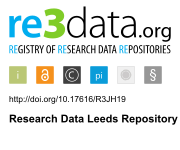Research Data Leeds Repository
The Influence of Nanobubble Size and Stability on In Vitro Ultrasound Mediated Sonoporation - data
Citation
Batchelor, Damien V. B. and Armistead, Fern and Ingram, Nicola and Coletta, P. Louise and Peyman, Sally A. and McLaughlan, James R. and Evans, Stephen D. (2022) The Influence of Nanobubble Size and Stability on In Vitro Ultrasound Mediated Sonoporation - data. University of Leeds. [Dataset] https://doi.org/10.5518/1257
Dataset description
Lipid-shelled nanobubbles (NBs) are emerging as potential dual diagnostic and therapeutic agents. Similar to their micron-scale counterparts, microbubbles (1 – 10 μm), they can act as ultrasound contrast agents, as well as locally enhance therapeutic uptake. Recently, it has been shown that the reduced size of NBs (< 1 μm) promotes increased uptake and accumulation in tumour interstitial space, which can enhance their diagnostic and therapeutic performance. However, accurate characterisation of NB size and concentration is challenging, and may limit their translation into clinical use. Their sub-micron nature limits accuracy of conventional microscopy techniques, whilst common light scattering techniques fail to distinguish between sub-populations present in NB samples (i.e. bubbles and liposomes). Due to the difficulty in the characterization of NBs, relatively little is known about the influence of size on their therapeutic performance. In this study, we describe a novel method of using a commercially available Nanoparticle Tracking Analysis (NTA) system, to distinguish between NBs and liposomes, based on their differing optical properties. We used this technique to characterize 3 NB populations of varying size, isolated via centrifugation, and subsequently used this to assess their potential for enhancing localized delivery. Confocal fluorescence microscopy and image analysis were used to quantify the ultrasound enhanced uptake of fluorescent Dextran into live colorectal cancer cells. Our results showed that the amount of localized uptake did not follow the expected trends, in which larger NB populations out-perform smaller NBs, at matched concentration. To understand this observed behavior, the stability of each NB population was assessed. It was found that dilution of the NB samples from their stock concentration influences their stability, and it is hypothesized that both the total free lipid and inter-bubble distance play a role in NB lifetime, in agreement with previously proposed theories and models.
| Keywords: | Nanobubbles, Microbubbles, Ultrasound, Cancer, Microfluidics, Drug Delivery, Nanoparticle Tracking Analysis, Resonant Mass Measurement, Stability, Sonoporation | ||||||
|---|---|---|---|---|---|---|---|
| Subjects: | C000 - Biological sciences > C700 - Molecular biology, biophysics & biochemistry > C710 - Applied molecular biology, biophysics & biochemistry | ||||||
| Divisions: | Faculty of Engineering and Physical Sciences > School of Physics and Astronomy | ||||||
| Related resources: |
|
||||||
| License: | Creative Commons Attribution 4.0 International (CC BY 4.0) | ||||||
| Date deposited: | 22 Aug 2025 09:27 | ||||||
| URI: | https://archive.researchdata.leeds.ac.uk/id/eprint/1448 | ||||||





 README_BATCHELOR_2022.txt [1kB]
README_BATCHELOR_2022.txt [1kB]  README_BATCHELOR_2022.txt [1kB]
README_BATCHELOR_2022.txt [1kB]